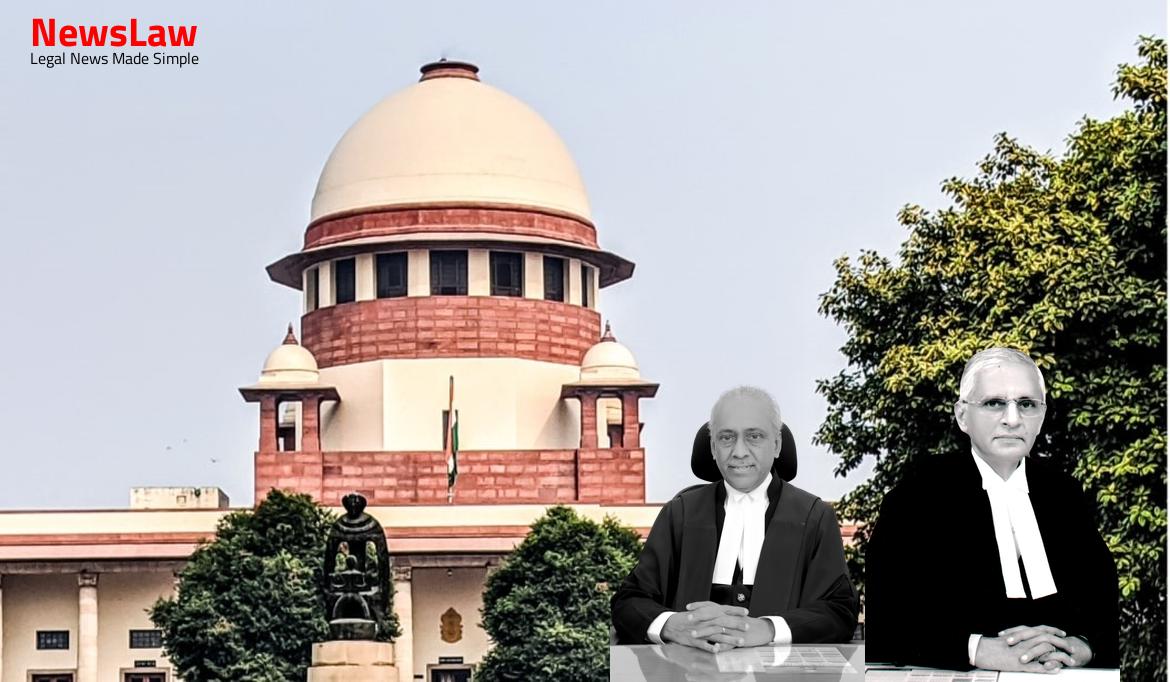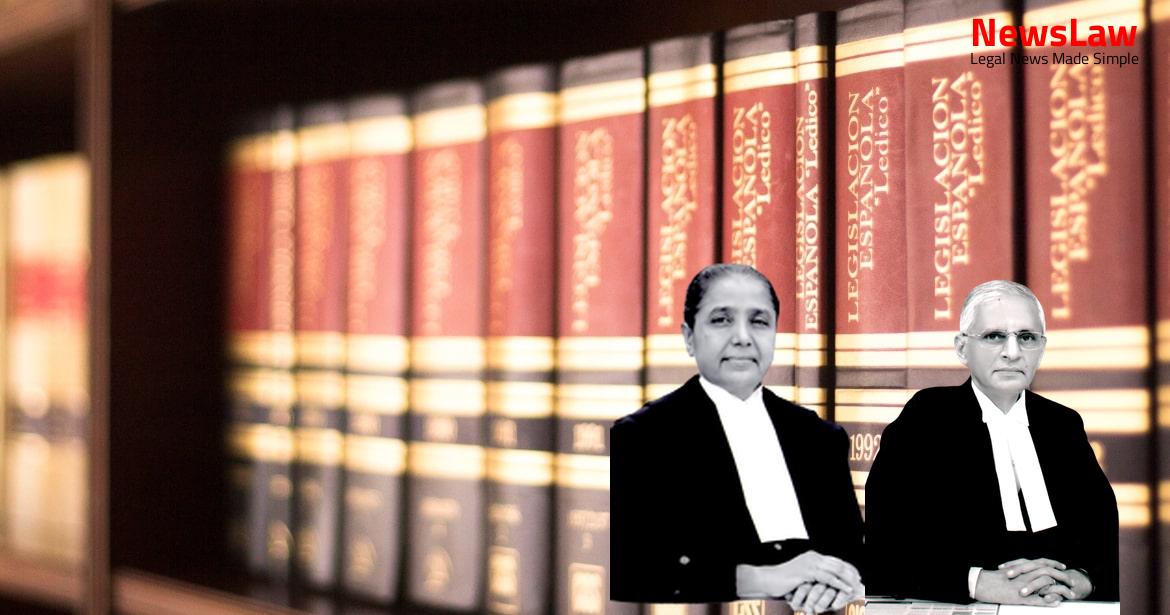Discover a detailed legal analysis in a recent court judgment regarding an insolvency resolution case. The court’s examination of factors such as viability, feasibility, and transparency sheds light on the legal framework governing such processes. The intricate discussion around the role of the Committee of Creditors and the boundaries of judicial review provides valuable insights into the complexities of insolvency resolution proceedings.
Facts
- Director/Promoter unsuccessfully approached High Court of Bombay at the earliest
- Appeal filed before NCLAT against NCLT order granting approval of Resolution Plan by SRA
- Resolution Professional appointed on 06.03.2018
- Expression of Interest invited on 30.03.2018
- Writ petition challenging NCLT orders dismissed on 23.08.2018
- First CoC meeting on 02.03.2018
- High Court granted stay of further proceedings before NCLT on 18.04.2018
- Sai Agro (India) Chemicals became Successful Resolution Applicant
- Resolution Plan approved by CoC on 09.02.2019
- NCLT rejected Director/Promoter’s application and approved Sai Agro’s Resolution Plan on 01.08.2019
- NCLAT allowed appeal on 02.06.2020 and remanded matter to Adjudicating Authority with directions
Also Read: Jurisdictional Analysis in Transfer Petition
Issue
- The order of the NCLAT is challenged by the appellants on various grounds
- The appellants argue that the viability and feasibility should be left to the commercial wisdom of the CoC
- The appellants assert that a mere suspicion of breach of confidentiality is not sufficient proof
- It is argued that once a Successful Resolution Applicant addresses an issue and submits a plan, the Director/Promoter cannot raise a new issue
- The appellants claim that the advertisement issued was in compliance with regulations, including Regulation 36A
Also Read: Legal Analysis of Alleged Emission Cheating Scandal
Arguments
- Mr. Jayant Bhushan, learned Senior Counsel, argues that the Resolution Plan is flawed as it treats the ethanol plant, owned by a third party, as part of the corporate debtor’s assets, leading to incorrect evaluation of viability and feasibility.
- Collusion is alleged between the Resolution Professional and the Successful Resolution Applicant based on the dates of self-declaration and email exchanges.
- The legal possession of the ethanol plant and machinery was disputed in a collateral proceeding between its owner, Sarvadnya Industries Pvt. Ltd., and Janata Sahkari Bank Ltd., which was not resolved.
- The approval of the Resolution Plan, with the Successful Resolution Applicant as the sole bidder and quick approval by the CoC, raises concerns about the fairness and transparency of the process.
Also Read: Authority of University Syndicate in Affiliation Matters
Analysis
- The NCLAT interfered with the decision of the NCLT based on grounds of viability and feasibility, liquidation value matching, breach of confidentiality, and defective Invitation to Offer.
- The NCLAT’s interference was deemed legally and factually incorrect as all necessary factors were presented to the Committee of Creditors and the Resolution Professional, and the SRA and CoC were aware of issues such as the ethanol plant dispute.
- The NCLAT’s focus on minor mistakes in documentation was seen as creating unnecessary controversy, as the main issue of feasibility and viability had been addressed adequately.
- The Resolution Plan’s submission date, breach of confidentiality, and defective Invitation to Offer were not deemed substantial enough to warrant NCLAT’s decision to remand the case back to the NCLT.
- The NCLAT’s limited judicial review was highlighted as not allowing interference with the commercial decision of the Committee of Creditors, only ensuring that the corporate debtor is kept running as a going concern during insolvency resolution.
- Limited judicial review available within the framework of specific sections of the Insolvency and Bankruptcy Code.
- The business decisions of the majority of the Committee of Creditors are not to be infringed upon by the judicial review.
- The financial creditors are assumed to be fully informed about the viability of the corporate debtor and feasibility of the proposed resolution plan.
- The opinion of the financial creditors expressed through voting in CoC meetings is considered a collective business decision.
- Resolution timelines do not apply in certain ongoing corporate insolvency resolution processes.
- Invitation for expression of interest must be published within seventy-fifth day from the insolvency commencement date.
- Expression of interest must be unconditional and accompanied by specific undertakings and records.
- The resolution professional must conduct due diligence to ensure compliance of prospective resolution applicants.
- Form G must be published in specified newspapers, websites, and any other manner decided by the committee.
- The detailed invitation for expression of interest must specify criteria, ineligibility norms, basic information about the corporate debtor, and should not require any payment.
Decision
- Prospective resolution applicants meeting the requirements can submit an expression of interest within the specified time.
- Final list of prospective resolution applicants to be issued within ten days of the last date for objections.
- Expression of interest received after the specified time shall be rejected.
- Provisional list of eligible prospective resolution applicants to be issued within ten days of the last date for submission of expression of interest.
- Civil Appeals allowed, impugned NCLAT order set aside, and NCLT order dated 01.08.2019 restored.
- Any objections must be made with supporting documents within five days from the date of issue of the provisional list.
Case Title: THE KARAD URBAN COOPERATIVE BANK LTD Vs. SWWAPNIL BHINGARDEVAY (2020 INSC 533)
Case Number: C.A. No.-002955 / 2020



